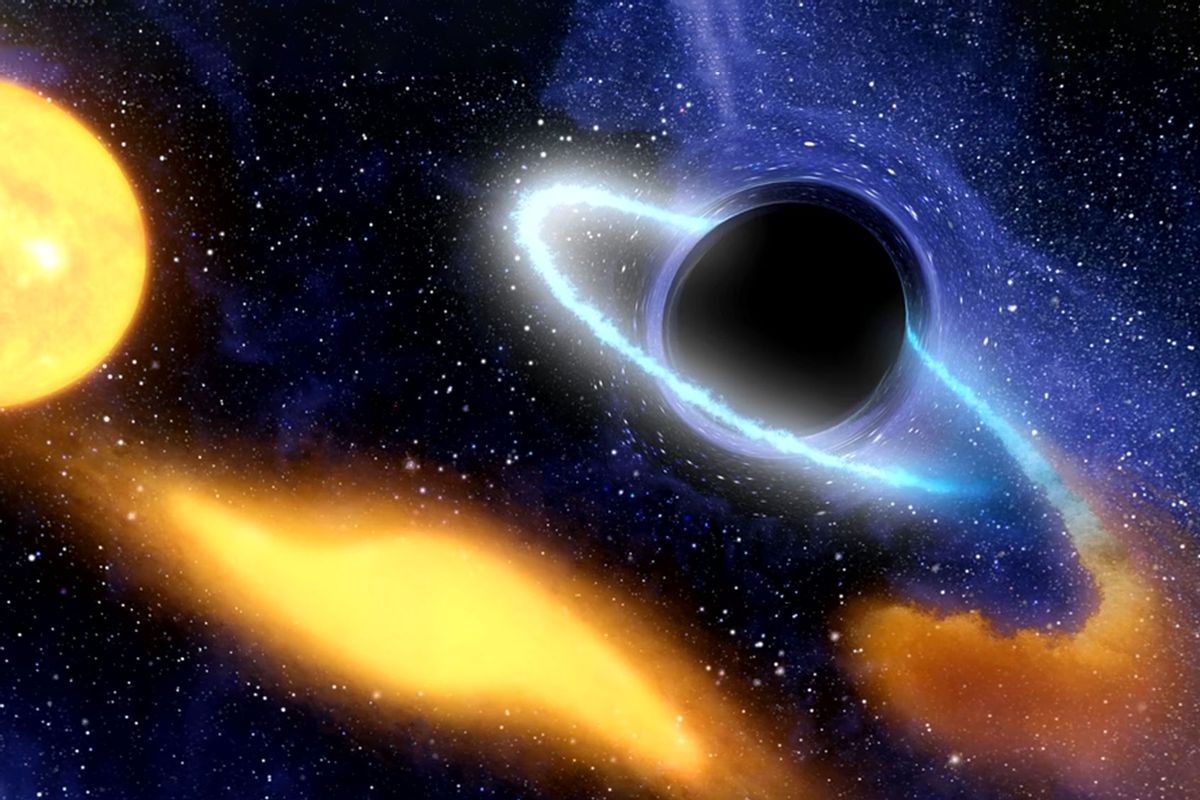

Baumgartner, Ronaldo Bellazzini, Stephen D. Antonelli, Matteo Bachetti, Luca Baldini, Wayne H. Frédéric Marin, Eugene Churazov, Ildar Khabibullin, Riccardo Ferrazzoli, Laura Di Gesu, Thibault Barnouin, Alessandro Di Marco, Riccardo Middei, Alexey Vikhlinin, EnricoCosta, Paolo Soffitta, Fabio Muleri, Rashid Sunyaev, William Forman, Ralph Kraft, Stefano Bianchi, Immacolata Donnarumma, Pierre-Olivier Petrucci, Teruaki Enoto, Iván Agudo, Lucio A.

X-ray polarization evidence for a 200 years-old flare of Sgr A *. 4Polarisation refers to the preferred direction of the oscillations of the electric field of a light wave.3They combined this data with that obtained from the European Space Agency's XMM-Newton and NASA's Chandra missions.2The scientists are from laboratories in Japan, the United States, Italy, Hong Kong, Canada, Russia, Germany, the Czech Republic, the United Kingdom, Finland, Spain, the Netherlands, China and France (Observatoire Astronomique de Strasbourg (CNRS/Université de Strasbourg) and Institut de Planétologie et d 'Astrophysique de Grenoble (CNRS/Université Grenoble Alpes)).The top image is a much wider view of the centre of the Milky Way obtained by Chandra.Ĭlick on this link to listen the sonification of the detection of an echo emitted by Sgr A* 200 years ago. It was combined with data from Chandra, another NASA X-ray observatory, seen in blue, which shows only direct light from the Galactic centre.

The IXPE data, which shows the echo of this past activity, can be seen in orange in the bottom image. New data from NASA's Imaging X-ray Polarimetry Explorer (IXPE) has provided evidence that the supermassive black hole at the centre of the Milky Way Galaxy- known as Sagittarius A* (Sgr A*) - went through a very intense period of activity some 200 years ago after gobbling up gas and dust that came within its range. The scientists are continuing their work on Sgr A* to try to determine the physical mechanisms required for a black hole to switch from a quiescent state to an active one. Points directly to its source, Sgr A*, even though the latter is now virtually extinct. Rather like a compass, the polarised X-ray light 4 , which was for the very first time able to detect the polarisation of this X-ray light with great precision and also determine its source, something that had previously proved impossible. To carry out their research, the scientists used NASA's IXPE ( Imaging X-ray Polarimetry Explorer) satellite 3 These findings explain why galactic molecular clouds near Sgr A* are shining more brightly than usual: it is because they are reflecting the X-rays emitted by Sgr A* 200 years ago. To get an idea of the increase in intensity of the X-ray emission when the black hole emerged from its quiescent state, it is as if a single glow-worm hidden in a forest suddenly became as bright as the Sun. However, the X-ray echo detected, which was emitted about 200 years ago, reveals that the original intensity was at least a million times greater than that currently emitted by Sgr A*. No effect was felt on Earth, as the distance between Sgr A* and our planet is too great (about two billion times the distance from the Earth to the Sun). Over a period of one year at the beginning of the 19th century, the black hole gobbled up cosmic objects that got a little too close to it, before once more entering a state of quiescence. Their work is published in Nature on 21 June. , a CNRS researcher at the Astronomical Strasbourg Observatory (CNRS/University of Strasbourg), has revealed the past awakening of this gigantic object, which is four million times more massive than the Sun. , the supermassive black hole at the centre of the Milky Way, emerged from a long period of dormancy some 200 years ago. An international team of scientists has discovered that Sagittarius A* (Sgr A*) 1


 0 kommentar(er)
0 kommentar(er)
